

 |
Search the Site with

|
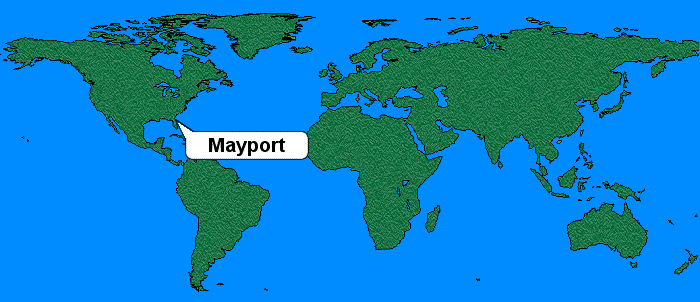
Naval Station Mayport is home to 55 tenant commands and private organizations. Some two dozen ships are presently berthed in the Mayport basin, including AEGIS guided-missile cruisers, destroyers and guided-missile frigates. The Naval Station is unique in that it is home to a busy seaport as well as an air facility which conducts more than 135,000 flight operations each year. Naval Station Mayport consolidated operations with Naval Air Station Mayport in 1992 and became Naval Station Mayport. More than 14,000 active-duty personnel, 45,000 family members and retirees and 1,400 civilian employees comprise the Mayport family. The Navy at Mayport covers 3,409 acres and is the third largest naval facility in the continental United States.
Location:
Naval Station Mayport is located near the Port of Jacksonville in northeast Florida on the south side of the St. Johns River just inside the entrance jetties and westward of St. Johns Point.
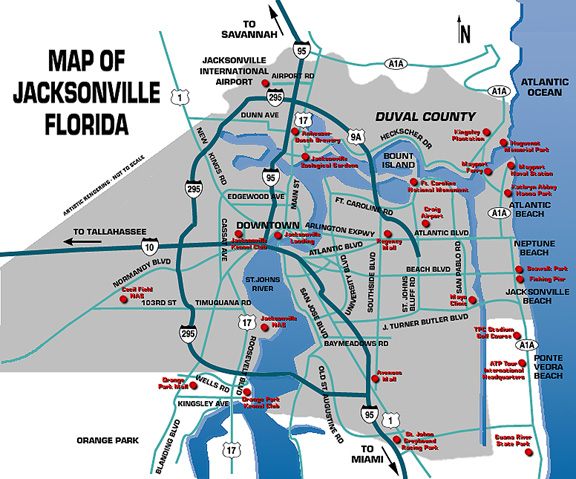
History: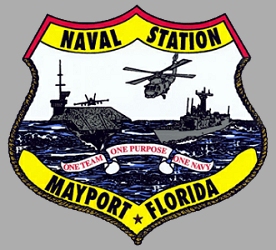 Mayport was commissioned in December 1942, and was approximately one quarter the size of the station today. The basin, dredged to 29 feet, was used by patrol craft, rescue boats, and jeep carriers. Reclassified as a Naval Sea Frontier Base in 1943, Mayport added a landing field and a fueling facility for submarines. Decommissioned at the end of the war, Mayport reactivated in 1948, and by 1955 added a master jet runway. As a naval station, Mayport served as an advance staging area during the Cuban missile crisis. Station ships have been involved in operations off the coasts of Lebanon, Granada, and in the Persian Gulf. Helicopters at Naval Air Facility, established in 1982, joined the fleet at Mayport Naval Station in 1992.
Mayport was commissioned in December 1942, and was approximately one quarter the size of the station today. The basin, dredged to 29 feet, was used by patrol craft, rescue boats, and jeep carriers. Reclassified as a Naval Sea Frontier Base in 1943, Mayport added a landing field and a fueling facility for submarines. Decommissioned at the end of the war, Mayport reactivated in 1948, and by 1955 added a master jet runway. As a naval station, Mayport served as an advance staging area during the Cuban missile crisis. Station ships have been involved in operations off the coasts of Lebanon, Granada, and in the Persian Gulf. Helicopters at Naval Air Facility, established in 1982, joined the fleet at Mayport Naval Station in 1992.
As chairman of the House Armed Services Subcommittee on Seapower, Representative Charles E. Bennett worked to turn Mayport Naval Station [a surplus military facility when Bennett was elected to Congress in 1948] into an aircraft carrier homeport and the second largest such port on the East Coast. In addition, he successfully secured three naval air stations in Jacksonville.
In 1990 the Congress directed the Secretary of Defense to submit to Congress a plan for upgrading Mayport to provide the naval station with the capability to be able to service nuclear-powered aircraft carriers and otherwise to serve as a homeport for nuclear-powered aircraft carriers. This was consistent with the Navy's plan to retire conventionally fueled aircraft carriers and to deploy nuclear-powered aircraft carriers, under which the Navy had a requirement for a second East Coast homeport for nuclear-powered aircraft carriers (in addition to the existing homeport of Norfolk, Virginia). In 1992 the Secretary of the Navy was directed to submit to the congressional defense committees a report on the Navy's plan for developing a second East Coast homeport for nuclear-powered aircraft carriers. The report was to include a schedule, by fiscal year, for funding the development of a second homeport for nuclear-powered aircraft carriers on the East Coast of the United States.
The Harbor:
The station's harbor can accommodate up to 34 fleet units, including two aircraft carriers. Berths consist of the two primary carrier piers (C1 and C2), and several other piers for smaller naval vessels. Berths B2 and B3 have also been used as a carrier pier. Depths at all piers except Al are silted to about 38 ft at mean low water (MLW) and were dredged to 45 ft in 1982. Pier heights are 11 ft at delta piers and 12 ft above MLW at Bravo and Charlie piers while normal high tide is 5 ft above MLW.
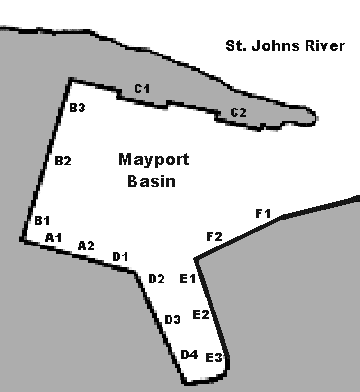
Photos of the Mayport Naval Station:
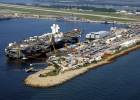
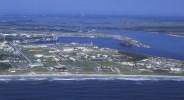
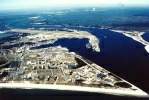
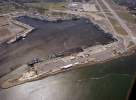
 BACK to last page.
BACK to last page.  Back to selection page.
Back to selection page.  Back to 1st page.
Back to 1st page.